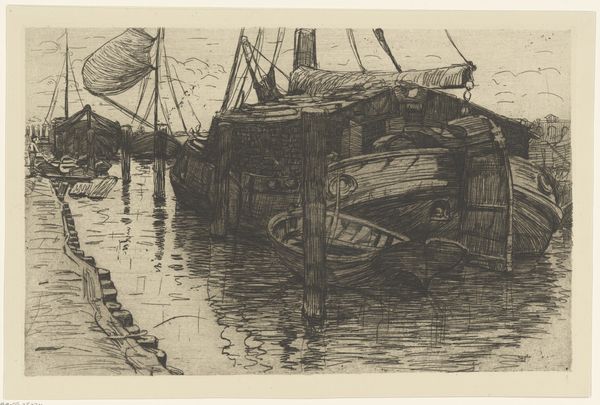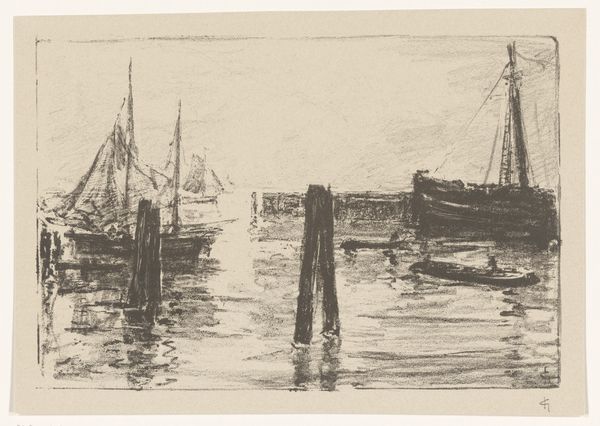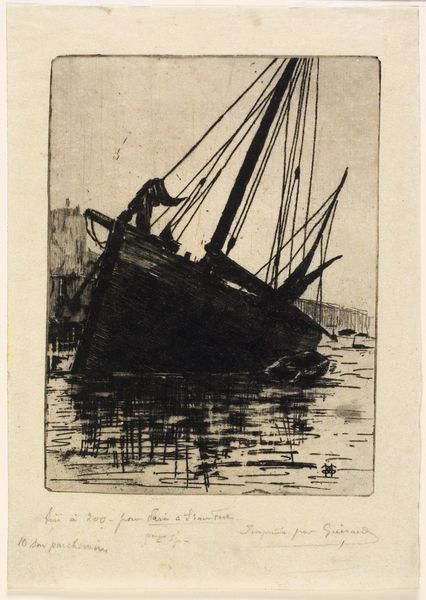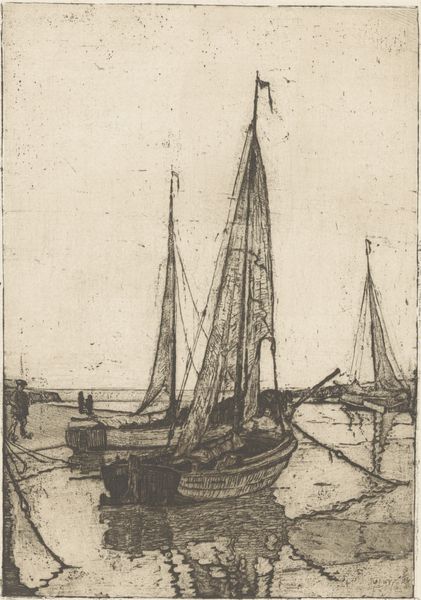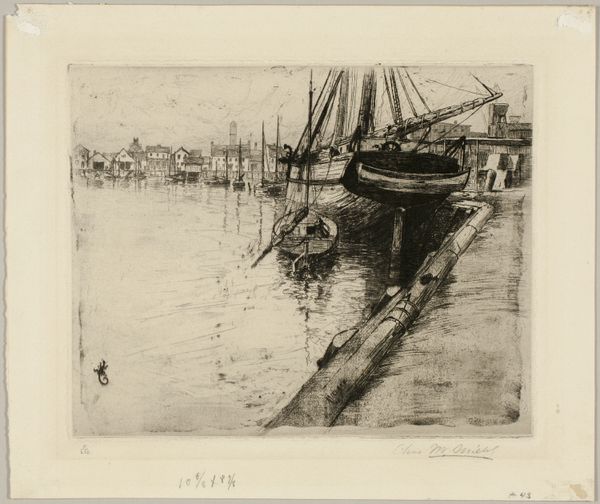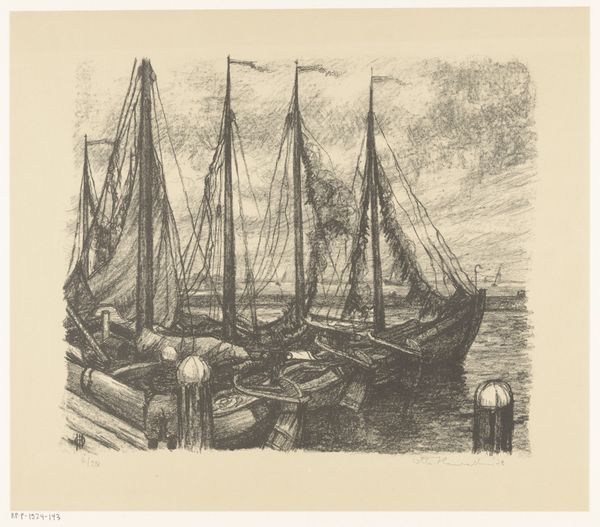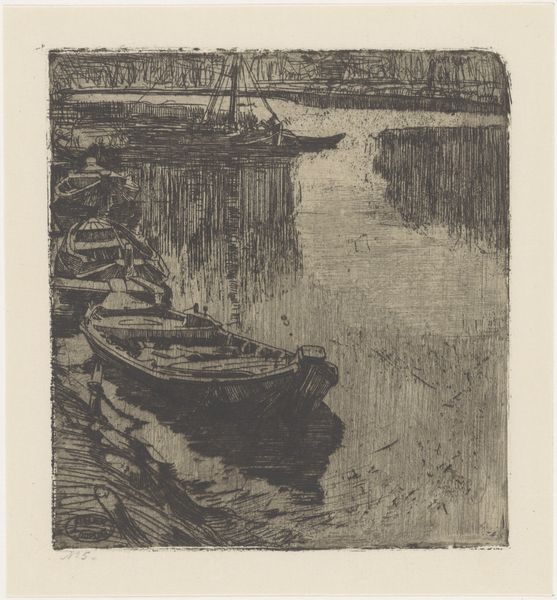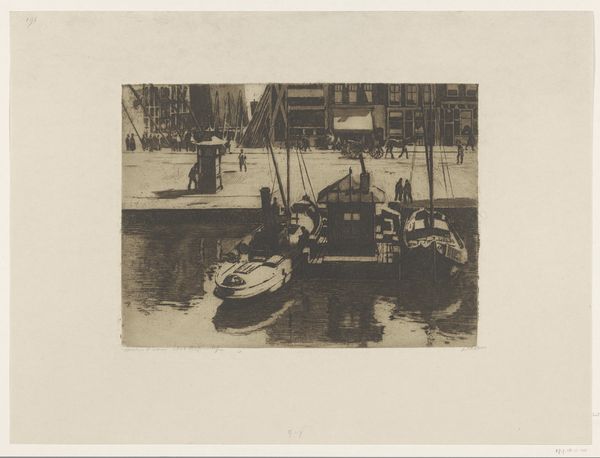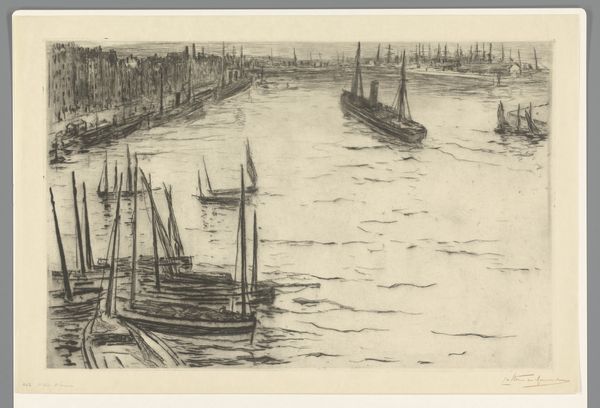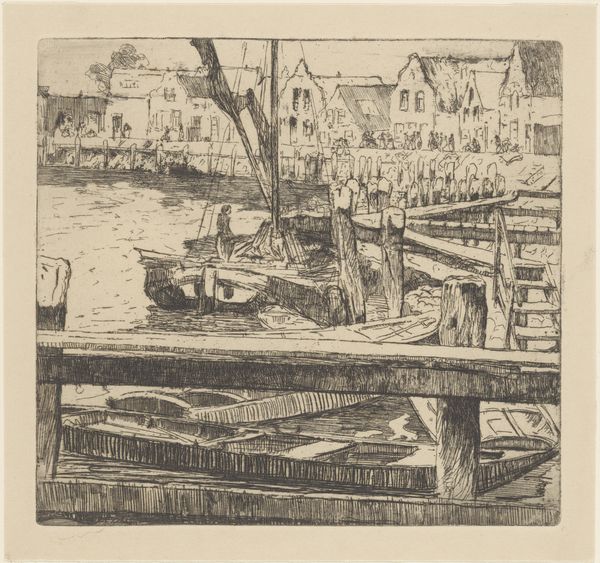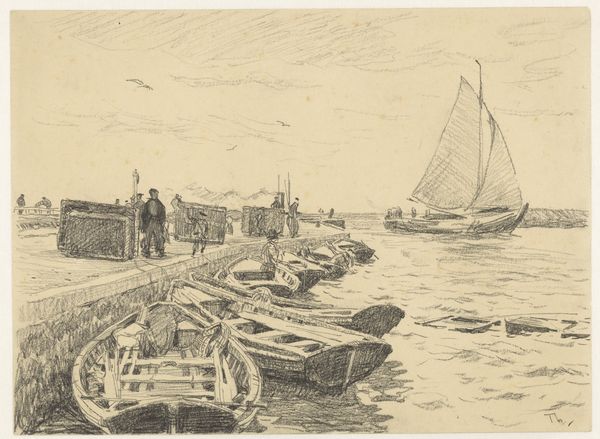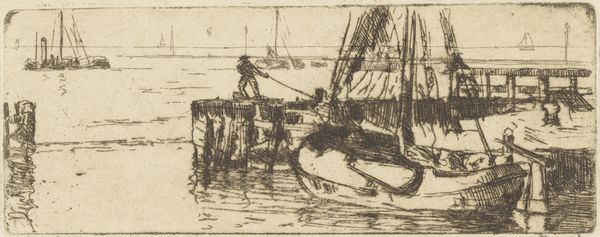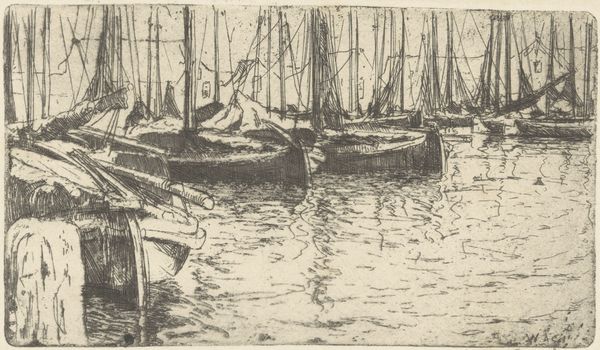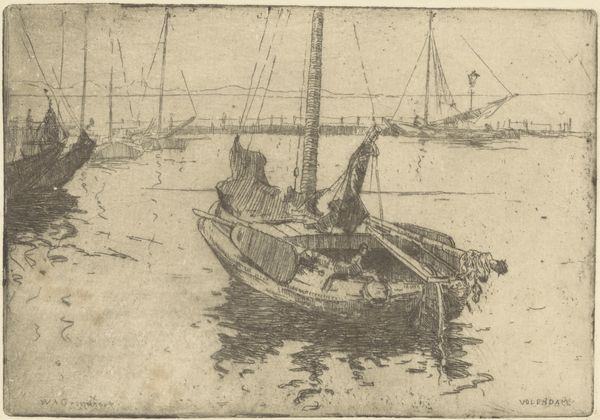
Dimensions: height 233 mm, width 266 mm
Copyright: Rijks Museum: Open Domain
Curator: This etching by Pieter Dupont, titled "Schepen in het Damrak in Amsterdam," made between 1895 and 1896, captures a moment in Amsterdam's bustling harbor. What are your first thoughts? Editor: My first impression is one of quiet industry. It feels very much of its time, a snapshot of everyday life transformed through art. There is something about the almost monotonous layering of boats which gives off the impression of working, but on a small-scale, human level. Curator: It's interesting that you see "quiet," as Dupont chose a very hands-on and reproducible medium: printmaking. He would have etched this image into a metal plate, then used that plate to produce multiple impressions. The labor involved contrasts the stillness of the boats. I'd hazard that in this way it reflects the way the city itself relied on slow and deliberate production. Editor: Precisely, that links to my sense of "quiet." Consider where the Damrak was, historically: as the city's harbour front it would have been a melting pot of trade and influence. But beyond that, the scene and technique also point to a shift towards documenting urban spaces and the culture of this location, indicating something about Amsterdam's identity being cultivated at this period. Curator: And that etching style, the network of finely articulated lines, mirrors the materiality of the ships themselves – the planks of wood, the ropes, the layered structures. Dupont wasn't just capturing a scene; he was translating its textures, and in effect making the process of construction the artwork's content. It brings forth the city’s own construction in art, showing a new reality for art’s cultural influence at the time. Editor: The choice of perspective adds to this, I think. By showing boats both pulled up on the bank, and floating, it shows different parts of how labour impacted people's lives, from shipbuilding to managing and directing vessels as goods were exchanged on the trade front. Curator: Looking at the wider cultural influences of the day, artists at the time were often experimenting with new ways to portray the impact of industry and consumerism on the old trade front. But Dupont hones in on a singular image and translates these ideas materially using accessible visual techniques, thus documenting everyday reality into art and pushing forward its influence. Editor: Yes, and seeing the etching in the museum setting makes us think of the relationship between art and the socio-economic history of its day and the role of this piece today. Curator: Indeed, viewing it through the lens of material history has highlighted how interconnected process and representation were in conveying its time. Editor: It enriches how we think about the legacy of art from 19th-century Amsterdam!
Comments
No comments
Be the first to comment and join the conversation on the ultimate creative platform.
